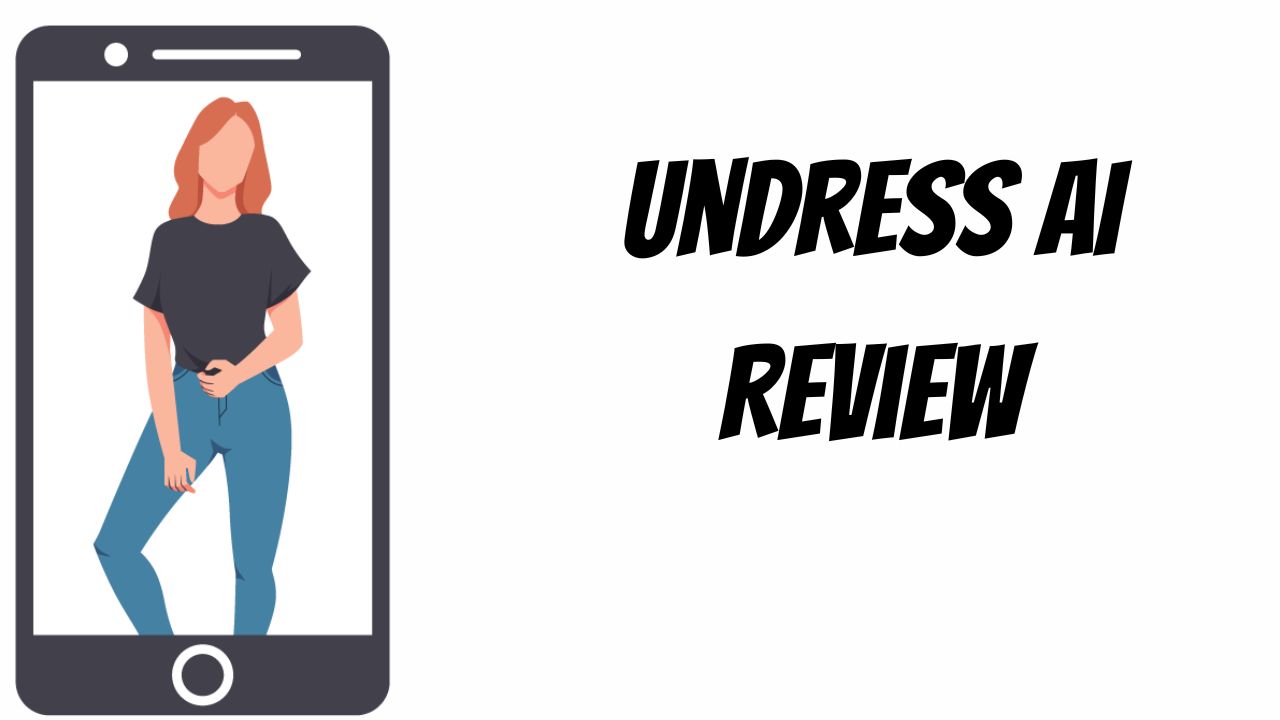AI Undress Apps: Exploring The Controversial Deepfake Trend
Is technology truly a mirror reflecting our aspirations, or can it also distort the very essence of human dignity? The rise of AI-powered applications capable of digitally removing clothing from images forces us to confront the unsettling possibilities of manipulation, consent, and the erosion of privacy in a hyper-connected world.
The digital landscape is rapidly evolving, and with it, the ethical considerations surrounding artificial intelligence become increasingly complex. "AI apps that undress," often referred to as "deepfake" or "nude" apps, have emerged as a particularly troubling trend. These applications, fueled by sophisticated AI algorithms, promise users the ability to manipulate images and create what appear to be realistic depictions of individuals without their clothing. This technology, however, is not merely a novelty; it is a potent tool that raises profound questions about the nature of image creation, consent, and the potential for misuse.
The allure of these applications is rooted in their apparent simplicity. With the advent of tools like "ptool's ai clothes remover," the once-daunting complexities of image manipulation, previously requiring specialized software like Photoshop, seem to vanish. The promise of instantaneous transformation, of effortlessly removing clothing from images with a few clicks, is undeniably appealing, particularly to those in creative fields or those seeking a novel form of personal entertainment. These apps often boast of their capacity to meticulously preserve image quality while implementing the selected modifications, ensuring that the resulting images maintain a natural appearance. The user is presented with a seemingly effortless process, a digital sleight of hand that offers instant gratification. Yet, beneath the surface of this apparent ease lies a minefield of ethical concerns.
- Viralkandcom Your Guide To Viral Content Digital Marketing
- Martin Kretz Eve Divorce Rumors The Parisian Agency
The very functionality of these apps relies on the power of artificial intelligence and deep learning. They employ complex algorithms to identify and isolate clothing within an image, effectively "painting over" the garments and replacing them with a digital representation of the underlying skin. This process is not simply a cosmetic alteration; it is a form of digital forgery. While developers may present these tools as innovative aids for creative design, the fashion industry, or even personal amusement, the potential for misuse looms large. The capacity to generate realistic, yet fabricated, images has significant implications for the concepts of authenticity, trust, and the potential for harm.
The most significant ethical issue raised by these AI-powered tools is the blatant violation of privacy and the potential for non-consensual creation of explicit images. The ability to digitally undress an individual without their knowledge or permission is a direct assault on their right to bodily autonomy and their personal integrity. Imagine the distress and potential damage caused by a manipulated image circulating online, particularly if the target of the manipulation is a public figure or someone known to the perpetrator. The ease with which these applications operate makes them particularly dangerous, and the potential for widespread abuse is a serious concern.
The use of such technology goes beyond mere privacy violations; it can facilitate various forms of harassment, cyberstalking, and even sexual exploitation. It can be used to create revenge porn, a despicable act that can lead to lasting psychological harm. The victims of such manipulations often experience feelings of shame, humiliation, and vulnerability, and the potential for this type of abuse is amplified by the accessibility and ease of use of these AI apps.
- Unlocking Hsoda 030 A Comprehensive Guide Tutorial
- Aditi Mistry Latest Updates Exclusive Content What You Need To Know
It's also crucial to consider the potential impact of these tools on vulnerable populations. It's easy to envision how they could be used to target minors, creating images that can be used for grooming, exploitation, and child sexual abuse material (CSAM). This raises serious questions about the responsibilities of the developers of this technology. Are they adequately addressing the potential for harm? Are they taking measures to prevent misuse and protect vulnerable individuals?
Furthermore, there is an even broader concern: the potential erosion of trust in visual media. As these tools become more sophisticated, it becomes increasingly difficult to distinguish between authentic images and manipulated ones. This can have a ripple effect, leading to the questioning of photographic evidence and the manipulation of public opinion. In a world already grappling with "fake news" and misinformation, the proliferation of realistic deepfakes can further erode trust in what we see and hear. This can lead to a society where nothing can be trusted.
It is imperative to understand that these apps are not simply tools; they are a catalyst for societal change, one that requires critical assessment. The technology that allows these manipulations is becoming increasingly accessible, leading to broader and more nefarious uses. While there are attempts to promote these apps as mere forms of entertainment or as tools for creative endeavors, the inherent risk of enabling voyeuristic and unethical uses cannot be ignored.
Several alternative applications, sometimes promoted as AI clothes removers, have surfaced, yet these alternative options don't entirely escape the ethical quandaries of the genre. Often, their focus leans toward artistic expression, but the fundamental concern persists: how do we ensure this technology isn't used to violate individual rights and perpetuate harm? Even apps focusing on consensual nudity or artistic exploration must be thoroughly assessed for their potential impact.
The creators of deepnude apps may initially claim that they are offering users a convenient service, one that can be utilized for various purposes. However, the nature of the technology lends itself easily to abuse, making it a double-edged sword that carries substantial risks. The ease with which one can upload images and digitally remove clothing from depicted subjects raises concerns about the potential for this technology to be exploited.
The discourse must also include discussions about the legal frameworks surrounding deepfakes and image manipulation. Many countries have laws that address the non-consensual creation and distribution of intimate images, but these laws may not yet fully account for the specific challenges posed by AI-generated deepfakes. Legislatures must proactively address the gap between technological advancements and legal protections, providing victims with the means to seek redress and prevent further harm.
The responsibility does not rest solely with the developers of these technologies. Social media platforms, websites, and other online spaces must take an active role in preventing the spread of manipulated images. This includes the implementation of robust content moderation policies, the deployment of AI-powered tools to detect and remove deepfakes, and the education of users about the dangers of manipulated content.
Ultimately, the rise of AI apps that undress compels us to confront uncomfortable truths about technology and its impact on our social fabric. It forces us to engage in a critical examination of our values, our responsibilities, and the future we want to create. It is time to hold these creators responsible for the damage these apps can cause. It's time to have the difficult conversations, and to take proactive steps to mitigate the risks and protect the dignity of all individuals in the digital age.
The evolution of AI has resulted in an incredibly diverse range of applications and features, some with implications we are only beginning to comprehend. As we progress further into this digital frontier, it is imperative to assess these technologies with meticulous care, promoting responsible innovation and the implementation of policies that protect human rights and uphold the values of an equitable society.
The conversation around "undress AI" apps must extend beyond the technical aspects. It needs to engage ethicists, legal scholars, policymakers, and the broader public. Only through a multi-faceted approach can we successfully navigate the complexities of this technology and ensure that it serves humanity's best interests, not its darkest impulses.
The very nature of this technology, offering the potential to manipulate reality itself, presents a formidable challenge to our existing social norms and legal structures. The creation and distribution of deepfake images must be regarded as a serious transgression, akin to defamation, harassment, and even sexual assault. Those who choose to utilize such technologies for nefarious purposes must be held accountable for their actions. Society must cultivate a culture of respect, consent, and privacy.
It is also important to foster a global dialogue on these issues, because these technologies transcend national borders. An international approach will be required to address the various challenges, including establishing uniform laws, enhancing digital literacy, and tackling the misuse of such tools.
- Vegamovies Risks Safe Movie Downloads What You Need To Know
- Deephotlink The Ultimate Guide To Seo Digital Marketing Success

Undress AI Review Decoding The Controversial App

The Ultimate Guide To The AI Undress App Everything You Need To Know

The Ultimate Guide To The AI Undress App Everything You Need To Know